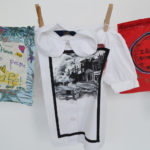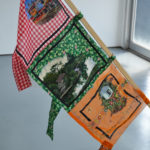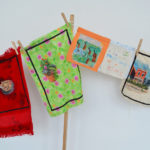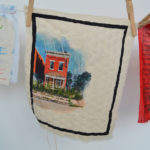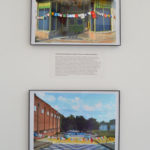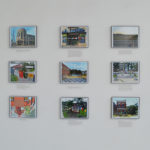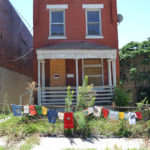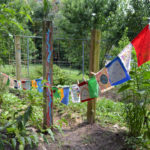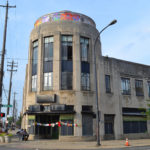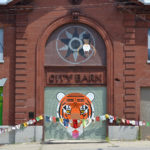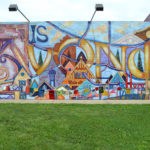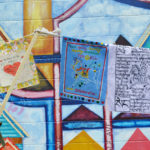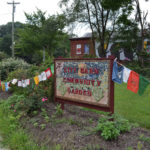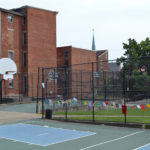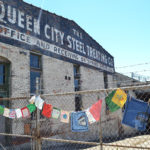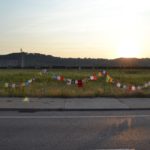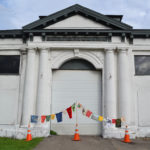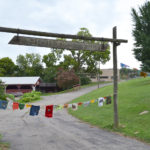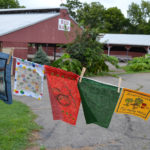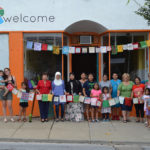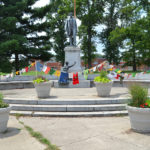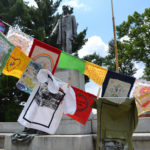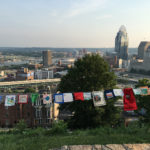























Installation at Queen City Steel
Prayer Flags for Cincinnati Acrylic paint on found 2017Camp Washington historically was one of Cincinnati’s most important inner urban industrial and residential areas, bordered by the Mill Creek Valley, which in the mid 18th century was a popular route to transport livestock and goods to and from the river. By the late nineteenth century, Camp Washington was the center of Cincinnati’s livestock and meat packing industry as well as other supporting industries and as a result, Camp Washington’s population swelled to slightly less than 12,000 residents in 1930. As heavy manufacturing began to decline, Camp Washington saw the same urban population outmigration experienced in other Cincinnati neighborhoods. The construction of I -75 during the late 1950’s and early 1960’s also affected Camp Washington negatively by isolating the residential sectors and diverting businesses and customers from the previously lively business district.
Prayer Flags for Cincinnati was a collaborative project featuring the perspectives and input of local Cincinnati residents which inspired both the themes and images of the flags created as well as their locations of installation. The homemade flags are modeled after Tibetan prayer flags, traditionally hung around homes, villages, and sacred sites and are believed to ward off evil spirits and bring luck to those touched by the winds that pass through the flags. Instead of using the traditional dyed cottons and mass woodblock printing, the flags are made out of the scraps of everyday life, including clothing, doilies, handkerchiefs, napkins, tablecloths, pillowcases and curtains. Images of Cincinnati’s triumphs, the dreams of its residents and most importantly, the toughest of its struggles are hand-painted onto each fabric flag. These experiences are literalized through hand-painted imagery, emerging from the cloth as either prideful adornment or through the form of a stain on the surface of the fabric.

